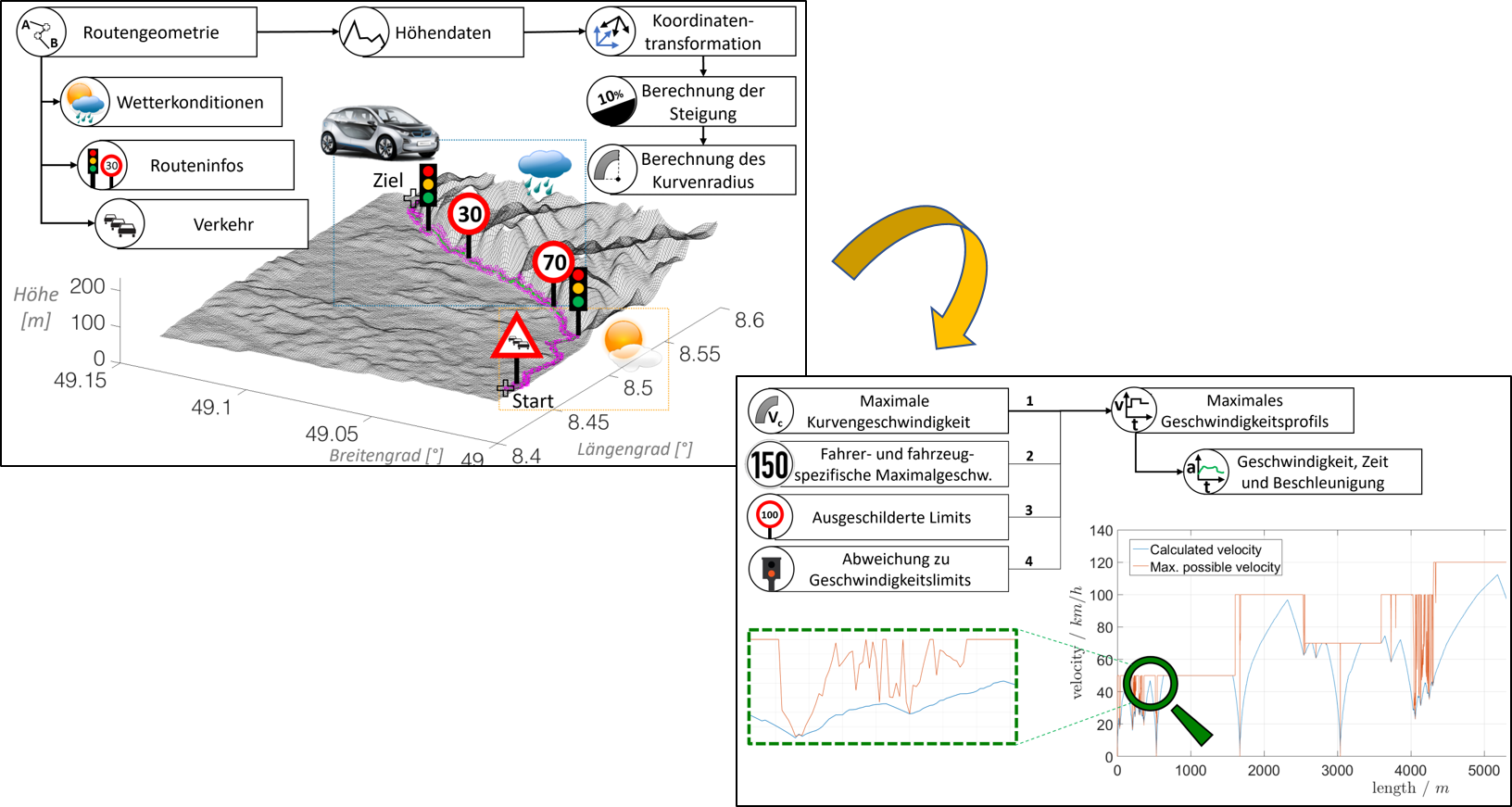
Model-Based Development and Rapid Prototyping Systems
The development of cyber-physical systems (CPS) such as vehicles or industrial plants is characterised by a rapidly increasing complexity and their growing internal and external networking. In order to master the functional complexity, it is necessary to shift the analysis and development activities towards suitable simulations of the products. In the field of industry, this is commonly referred to as "digital twins", while the term "model-based development" is coined especially in software-intensive systems. Across its various research topics, IEEM pursues the cross-sectional approach of developing innovative solution concepts by means of simulations and modelling and making them available in suitable demonstrators via rapid prototyping.
From the system idea via subsystems and implementations to the (rapid) prototype
The IEEM at Karlsruhe University of Applied Sciences offers expertise and a variety of simulations and modelling of CPS and their subsystems from different perspectives (vehicle, industry, functions, safety and security, engines...) as well as a high number of rapid prototyping (RP) systems. The "hardware" of the RP systems includes a chassis dynamometer, a climate and altitude simulation test bench for engines, a BMW i3 as a development vehicle, a golf cart converted for autonomous driving functions incl. associated sensor technology, lifting platforms, a "road environment simulator" with integration of vehicle and bicycle models as well as various automotive diagnostic devices, RP control unit boards etc.
Use of virtual models and RP systems
The use of virtual models and RP systems takes place, for example, in the following topics:
- For the development of autonomous and ADAS vehicle functions, IEEM uses Unity applications for environment simulation. Depending on the application, the connection to the ego object (vehicle, bicycle) is carried out simulatively or by means of real prototypes.
- For the development of automotive security concepts, IEEM models the vehicle E/E architecture and its offboard interfaces using a coordinated tool suite. Thus, models of application functions (ADAS, Powertrain, Body & Comfort...) are integrated into a suitable networking model via model-based tools and autocoding or in a direct manner, depending on the example complexity. More precisely, the functions are partitioned to different virtual (and partly real) ECUs and the networking model represents the entire communication behaviour of the vehicle. The different interfaces of this system of systems allow the analysis of integration of diverse applications and security artefacts on different levels.
- For the development of an intelligent energy and range management for e-vehicles and bicycles, we model both the mechatronic system "vehicle" including powertrain and auxiliary consumers in tools such as Matlab/Simulink. Furthermore, interfaces for influences of the route choice (gradient, weather, driver type...) are integrated into the overall model via further tools and defined interfaces.

Key data
Karlsruhe
Institute of Energy Efficient Mobility (IEEM)
Moltkestr. 30
76133 Karlsruhe
Post >
Institute of Energy Efficient Mobility (IEEM)
Postfach 2440
76012 Karlsruhe
